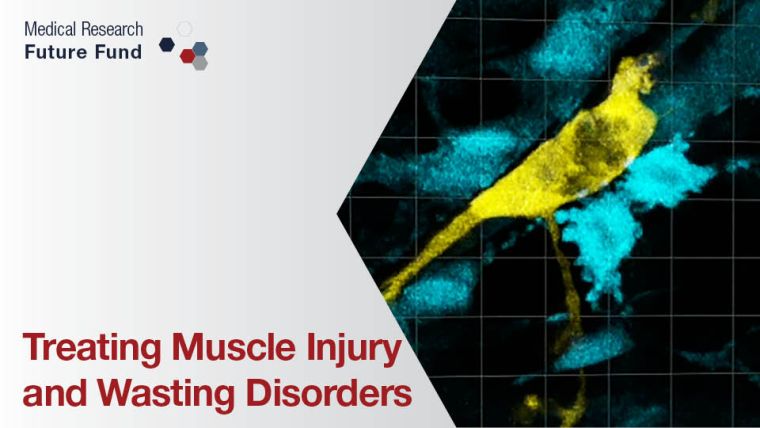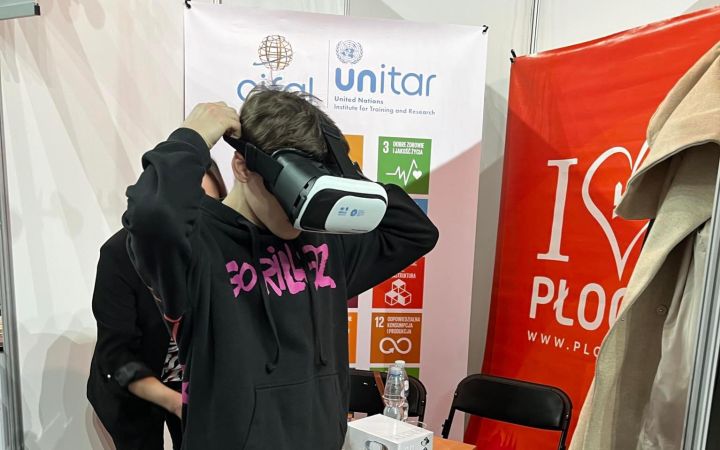
How muscle heals
The muscles attached to bones that we use to move our body are skeletal muscles. If these muscles are injured, specialised stem cells, called satellite cells, repair the muscle tissue. They do this by regenerating. That means they reproduce many more satellite cells identical to themselves. The new cells become part of the muscle tissue, repairing it.
‘Skeletal muscle can regenerate,’ says Professor Peter Currie, Australian Regenerative Medical Institute, Monash University. ‘If you have an injury or work out too hard at the gym, your muscle will repair that injury.’
Injured or diseased muscle can lose the capacity to self-repair
But injured or diseased muscle can lose this capacity to self-repair. This includes muscles damaged or removed in war, accidents, or surgery. Muscles weaken and waste in diseases such as dystrophy and cancer and in ageing.
Satellite cell transplantation
For decades, researchers have tried to cure injured and diseased muscle by transplanting healthy satellite cells into the injury. They hoped the transplanted cells would repair the damaged tissue. Instead, the transplanted cells always died.
The discovery of NAMPT
In 2021, Peter and his international research team found out a potential reason why. They discovered a new substance needed to activate satellite cells to regenerate. Nicotinamide phosphoribosyltransferase (NAMPT) is secreted by immune system cells, called macrophages, at the site of an injury.
Macrophage means large eater in Greek. Macrophages are a type of white blood cell formed by the immune system. When there is tissue damage or infection they migrate to the injury site, where they engulf and digest damaged or diseased microbes.
‘We used to think macrophages were the “rubbish trucks” of the immune system that hoover up damage and take it away’, Peter says. ‘But our team showed macrophages are actually the “band masters”. By secreting NAMPT, they create a niche where satellite cells start to regenerate.’
Peter hopes his team’s discovery of NAMPT will lead to new treatments for damaged muscles. Helped by $820,000 from the Medical Research Future Fund, the team is developing
- a NAMPT injection to stimulate muscle repair inside the body
- NAMPT hydrogel to activate transplanted satellite cells.
Interest from around the world
Monash University patented NAMPT and synthetic NAMPT. These patents are ‘the recipe for how to make the macrophages that produce NAMPT,’ Peter explains.
‘It’s been a roller coaster ride since we published our research in March 2021,’ he says.
‘That article spawned a lot interest from global industry players. They offered to license our patents, so we realised we had something of value to them’.
A new Australian industry
Peter and Monash University want to build a local industry to manufacture cellular therapies. So they decided not to licence NAMPT to an international company.
‘Creating a local industry keeps the benefits of research translation in Australia. It provides local resources that help lift all the boats around it.’
The university is negotiating with biotech investors to finance a start-up company. The company will develop the new NAMPT treatments and get approval to market them.
‘The MRFF funding helped us to get our project ready to pitch to investors’, Peter says.
A treatment that could work in many medical settings
NAMPT has potential to cure any kind of skeletal muscle injury. For example, in surgery such as hip and knee replacements the muscle mass around the bone is damaged.
‘Adding a little bit of NAMPT to the surgical injury may improve outcomes,’ Peter says.
‘NAMPT could also delay ageing by activating our satellite cells to keep on regenerating for longer.’
Peter plans to market the new NAMPT treatments by 2027.








